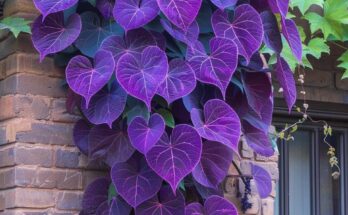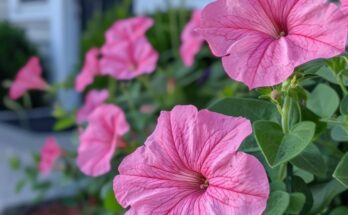In the quest for a healthier, cleaner living environment, incorporating indoor plants offers more than just aesthetic appeal. Certain plants have been identified for their remarkable ability to filter pollutants, reduce dust, and combat allergens in the air, making them a practical addition to any home or office. Here’s a list of seven indoor plants that can help you breathe easier and create a fresher, more inviting space.
1. Spider Plant (Chlorophytum comosum)
The spider plant is a resilient and easy-to-care-for option, making it ideal for beginners. Known for its ability to absorb mold and other allergens from the air, it’s a natural air purifier. Its rich foliage also helps capture dust particles, reducing the amount of airborne irritants.
2. Peace Lily (Spathiphyllum)
Not only do peace lilies add a touch of elegance to any room, but they also have a robust ability to neutralize toxic gases like formaldehyde and benzene. Additionally, peace lilies can improve air humidity by up to 5%, which can help reduce airborne dust and alleviate allergy symptoms.
3. Snake Plant (Sansevieria)
The snake plant, also known as mother-in-law’s tongue, is one of the most efficient air purifying plants. It filters out formaldehyde, which is common in cleaning products, toilet paper, tissues, and personal care products. This hardy plant releases oxygen at night, contributing to better indoor air quality and helping you breathe easier while you sleep.
4. Dracaena
Dracaena plants come in over 40 varieties, offering a wide range of sizes and colors to fit any room’s design. These plants are particularly effective at removing allergens and toxins like benzene, formaldehyde, and trichloroethylene from the air. Note that dracaena plants are toxic to dogs and cats, so pet owners might want to consider other options.
5. Bamboo Palm (Chamaedorea seifrizii)
The bamboo palm is a natural humidifier, releasing moisture into the air and reducing dust levels. It’s also effective at filtering out benzene and trichloroethylene. With its lush, green leaves, the bamboo palm adds a tropical feel to any room while working hard to clean the air.
6. English Ivy (Hedera helix)
English ivy is known for its ability to reduce mold in the home. It can absorb toxins and is particularly adept at filtering out airborne fecal particles, making it a smart choice for rooms with less than ideal air circulation. Its trailing vines can grow long and lush, adding greenery to vertical spaces.
7. Rubber Plant (Ficus elastica)
The rubber plant not only has a striking appearance but also packs a punch in purifying indoor air. It’s excellent at removing chemical toxins from the indoor environment, particularly formaldehyde. The large leaves of the rubber plant can absorb and break down airborne chemicals, turning them into compounds that the plant can use for growth.
Conclusion
Integrating these seven indoor plants into your living or working space can significantly improve air quality, reduce dust, and help mitigate allergy symptoms. Besides their health benefits, these plants can transform any indoor setting into a more vibrant, peaceful, and greener space. Remember, while indoor plants can contribute to a healthier environment, they should complement other dust and allergen reduction strategies like regular cleaning and using air purifiers.



